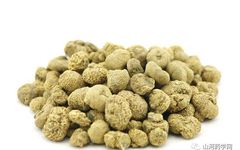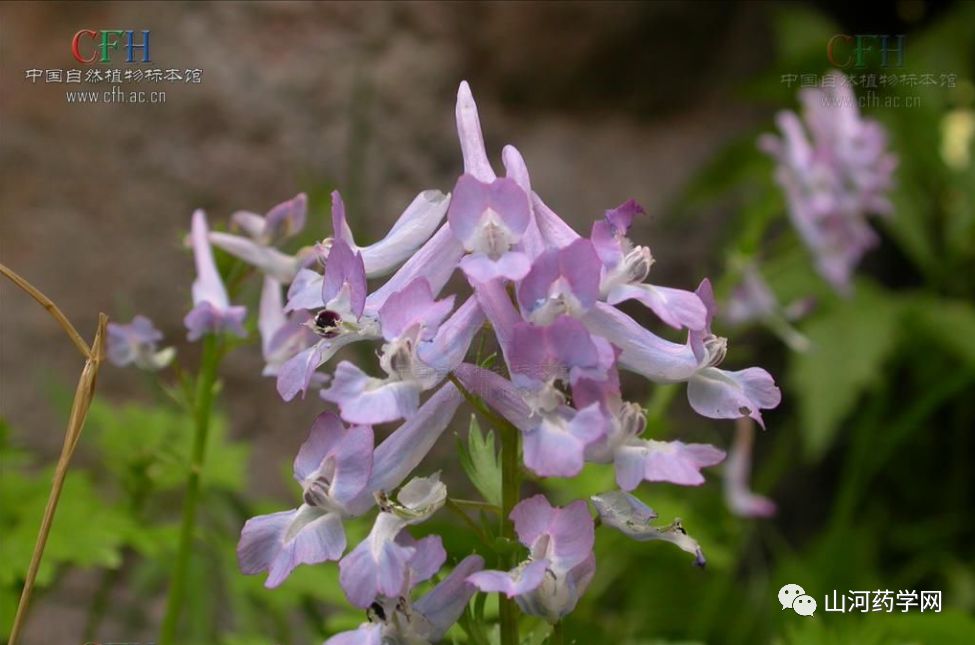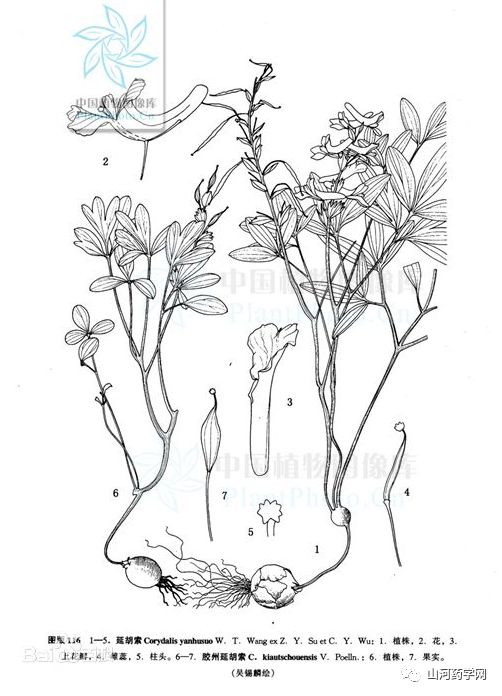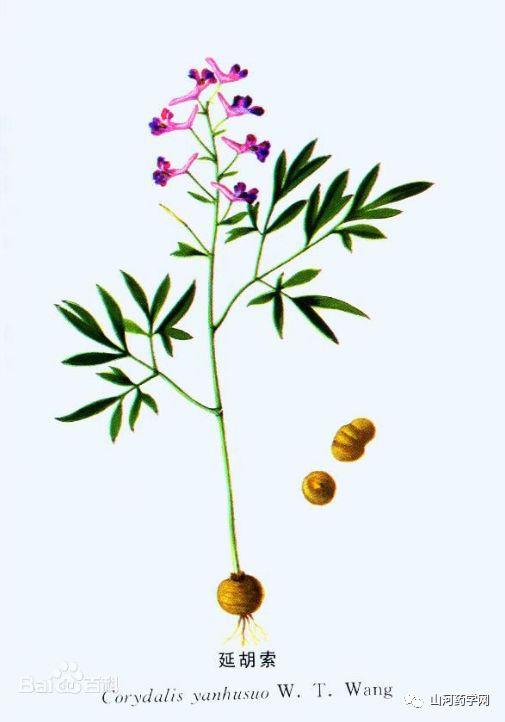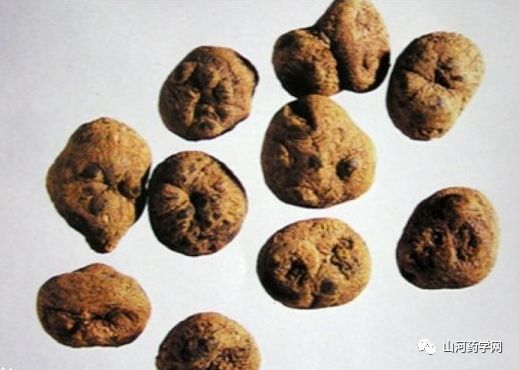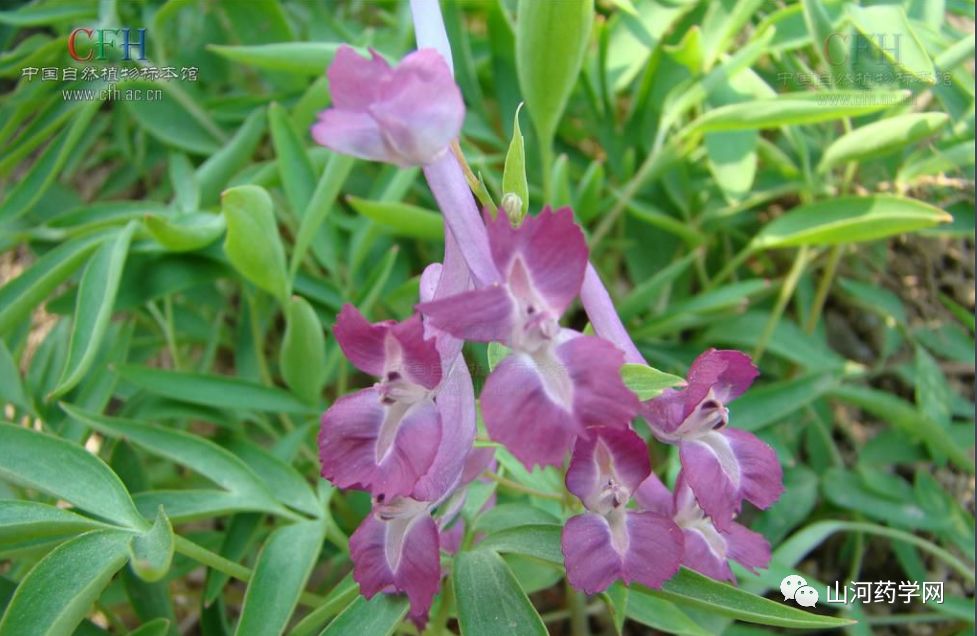| Yán Hú Suǒ
Yán Hú Suǒ
|
|
|---|---|
| Alias | Xuán Hú Suǒ, Yuán Hú, Yán Hú, Xuán Hú Suǒ, Yuán Hú Suǒ |
| Functions | Invigorates blood, regulates qi, alleviates pain. Used for chest and flank pain, abdominal pain, dysmenorrhea, postpartum stasis, and trauma-related swelling and pain. |
| First Recorded In | “Bencao Gangmu Shiyi” |
| Toxicity | Non-toxic |
| Meridians | Spleen Meridian, Liver Meridian |
| Nature | Warm |
| Taste | Pungent, Bitter |
【Source】This product is the dried tuber of the plant from the poppy family.
Yán Hú Suǒ is harvested in early summer when the stems and leaves wither. The tubers are dug up, the fibrous roots are removed, cleaned, and boiled in water until the white core is gone, then dried.
【Properties and Meridians】Pungent, Bitter, Warm. Enters the Liver and Spleen meridians.【Indications】Invigorates blood, regulates qi, alleviates pain. Used for chest and abdominal pain, dysmenorrhea, postpartum stasis, and trauma-related swelling and pain.【Applications】 Used for chest and abdominal pain, limb pain, hernia pain, and dysmenorrhea. It can treat various pains throughout the body, effective when used alone or in combination with other herbs in decoctions. For example, to treat gastric pain, it can be combined with Chuan Lian Zi (Toosendan Fruit); for cold-induced qi stagnation and blood stasis, it can be combined with Guo Lou (Trichosanthes Fruit) and Xie Bai (Garlic Chives); for dysmenorrhea, it can be combined with Dang Gui (Angelica Sinensis), Chuan Xiong (Chuanxiong Rhizome), Bai Shao (White Peony), and Xiang Fu (Cyperus Rotundus); for small intestine hernia pain, it can be combined with Xiao Hui Xiang (Fennel) and Wu Yao (Lindera); for trauma pain, it can be combined with Dang Gui, Chuan Xiong, Ru Xiang (Frankincense), and Mo Yao (Myrrh); for limb blood stasis pain, it can be combined with Dang Gui, Gui Zhi (Cinnamon Twig), and Chi Shao (Red Peony).【Dosage】 3-9g; ground into powder and taken orally, 1-3g per dose.【Caution】 Use with caution in pregnant women.【Storage】 Store in a dry place, protect from pests.
Varietal Verification
Yán Hú Suǒ was first recorded in the Tang Dynasty’s “Bencao Shiyi”, stating: “Yán Hú Suǒ grows in the Xi country, coming from the East, with roots resembling Ban Xia (Pinellia).” The Song Dynasty’s “Kaibao Bencao” states: “The root resembles Ban Xia, with a yellow color.” The “Bencao Gangmu” states: “Currently, it is cultivated in the Longdong area of the Maoshan region, planted after the Cold Dew festival, sprouting after the Beginning of Spring, with leaves resembling bamboo leaves, growing three inches high in March, and harvested in early summer.” According to literature, since the Ming Dynasty, the Yán Hú Suǒ used in the Guannei region has mostly been cultivated in Jiangsu and Zhejiang, which still represents the authentic Yán Hú Suǒ, matching the descriptions in the “Bencao Gangmu” and the illustrations in the “Zhi Wu Ming Shi Tu Kao”.Various Discussions1. “Leigong Pao Zhi Lun”: Treats heart pain that feels life-threatening.2. “Rihua Zibencao”: Expels wind, treats qi stagnation, warms the waist and knees, breaks blood stasis, and alleviates pain from miscarriage and acute waist pain.3. “Kaibao Bencao”: Primarily breaks blood stasis, treats postpartum diseases caused by blood issues.4. “Yixue Qiyuan”: Treats spleen and stomach qi stagnation, primarily for cold-induced diarrhea, heart and abdominal pain, and aids digestion.5. “Gangmu”: Invigorates blood, regulates qi, alleviates pain, and promotes urination.6. “Hai Yao Bencao”: Yán Hú Suǒ primarily addresses kidney qi, breaks postpartum lochia and childbed issues, and can be combined with San Leng (Sparganium) and Bie Jia (Soft-shelled Turtle Shell) for dispersing qi and unblocking meridians.7. “Gangmu”: Yán Hú Suǒ can move qi and blood stagnation, thus specifically treating various pains throughout the body, often showing remarkable effects when used alone.8. “Bencao Jing Shu”: Yán Hú Suǒ, when warm, can harmonize and promote qi flow; when pungent, it can moisten and disperse, thus invigorating blood flow.9. “Bencao Hui Yan”: Xuán Hú Suǒ, whether for blood or qi stagnation, can effectively promote circulation; when prepared with wine, it promotes circulation; when prepared with vinegar, it stops bleeding; when used to break blood stasis, it must be used raw; when used to regulate blood, it must be stir-fried.10. “Bencao Qiu Zhen”: Yán Hú Suǒ, regardless of whether it is blood or qi, can resolve stagnation effectively, as its warm nature promotes circulation and its pungent flavor moistens and disperses, thus addressing various pains throughout the body.However, it does not nourish qi or blood, and should be used with tonifying herbs in cases of deficiency; otherwise, it may cause harm without benefit.11. “Bencao Zheng Yi”: Yán Hú, while known for breaking stagnation and promoting blood flow, has a gentle nature and is not overly aggressive. Ancient practitioners often used wine to assist its movement, indicating its nature differs from harsh herbs, and it can also promote qi, thus treating both internal and external qi and blood stagnation, unblocking and dispersing, addressing all liver and stomach pains, serving as a harmonizing agent. Indications1. Cough. Use 1 liang of Yán Hú Suǒ and 7.5 qian of Pǔ Xiāo, ground into powder. Take 2 qian with a piece of soft candy to dissolve and swallow.2. Hematuria. Use 1 liang of Yán Hú Suǒ and 7.5 qian of Pǔ Xiāo, ground into powder. Take 4 qian decocted in water.3. Subcutaneous qi pain or qi mass pain. Grind Yán Hú Suǒ finely, take one pig pancreas, cut into small pieces, and apply the heated powder as needed.4. Chronic heart pain with body heat and cold feet. Use peeled Yán Hú Suǒ and Jin Ling Zi (Melia) in equal parts, ground into powder. Take 2 qian with warm wine or boiled water.5. Diarrhea with abdominal pain. Use 3 qian of Yán Hú Suǒ, taken with rice soup.6. Women’s blood qi issues (irregular menstruation, abdominal stabbing pain). Use peeled Yán Hú Suǒ (stir-fried with vinegar) and Dang Gui (Angelica Sinensis) (soaked in wine and stir-fried) in equal parts, with 2 liang of Ju Hong (Tangerine Peel), ground into powder, and made into pills the size of a walnut. Take 100 pills on an empty stomach with Ai (Mugwort) vinegar soup.7. Postpartum issues (retained blood, postpartum dizziness, abdominal fullness, heart blockage, cold and heat imbalance, and hand and foot restlessness). Use stir-fried Yán Hú Suǒ ground finely, take 2 qian with wine for significant effect.8. Hernia. Use Yán Hú Suǒ (salt-fried) and Quan Xie (Scorpion) (detoxified and used raw) in equal parts, ground into powder. Take 0.5 qian on an empty stomach with salt wine.9. Lumbar pain. Use Yán Hú Suǒ, Dang Gui, and Gui Xin (Cinnamon Heart) in equal parts, ground into powder. Take 3-4 qian with warm wine.10. Migraine and tension headaches. Use 7 pieces of Yán Hú Suǒ, 2 qian of Qing Dai (Indigo), and 2 pieces of Ya Zao (remove skin and seeds), ground into powder, and form pills the size of apricots. Take one pill dissolved in water and administered intranasally. For unilateral headaches, administer in the nostril on the painful side. At the same time, have the patient bite a copper coin to induce salivation, leading to gradual recovery.Disclaimer:The content on this site is added and organized by users for learning and reference purposes only. The information on the site may not be accurate, comprehensive, or up-to-date, and the content should not be considered the final basis for diagnosing or treating diseases.Shanhe Pharmaceutical Networkreminds users that if you experience any discomfort, please seek medical attention promptly. Thank you for your support and love; we will strive to do better~!!!


